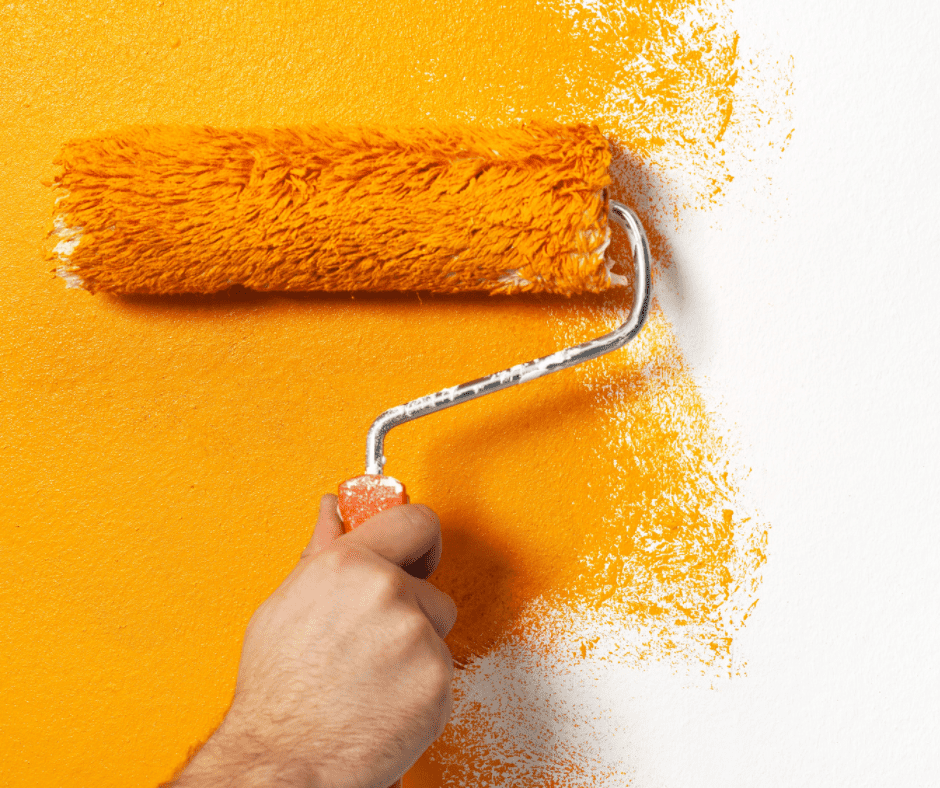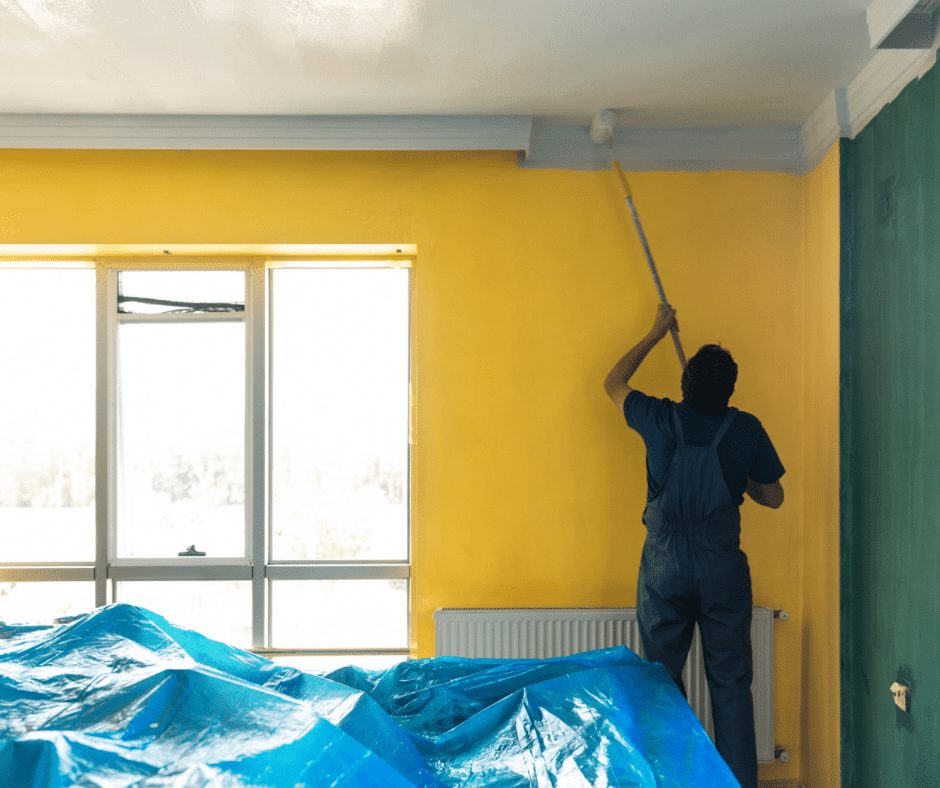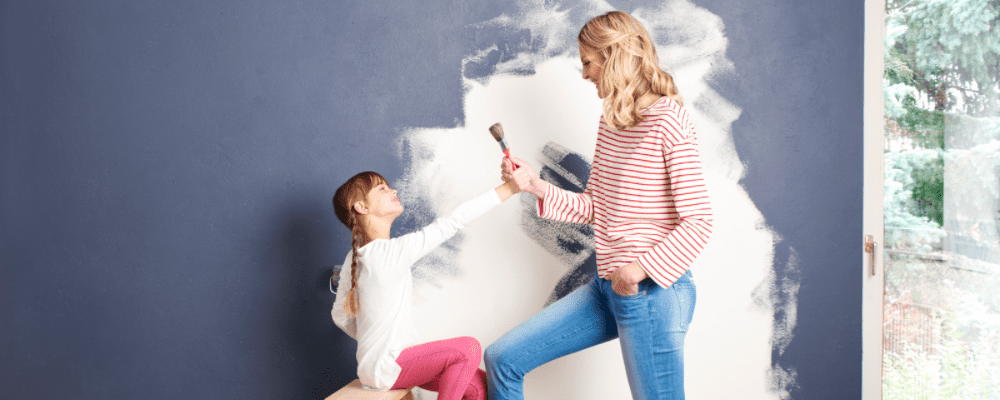Household renovations like repainting a room can be exciting and fun to plan out, but physically tiring when you do the actual work. When you execute your plan, there’s the expense of supplies, the stress of getting it right, and the exertion of doing the work.
You’ll probably want to get some sleep once you’ve finished. But, what if you’ve just repainted a room that you normally sleep in? It isn’t a matter of wet paint dripping on you while you sleep, there are dangerous fumes that you won’t want to inhale.
If you’re wondering how long you need to wait, you’ve come to the right place. This article will fill you in on how long you need to wait before you can sleep in a freshly painted room.
In This Article We'll Discuss
How Long After Painting Can I Sleep in the Room?

There’s no set answer to how long you should wait before sleeping in a room that you’ve painted. However, if you’re looking forward to getting right back into a freshly painted room to rest, you should adjust your expectations. To sleep safely, you’ll need to wait at least a day.
The issue isn’t waiting for the paint to fully cure, it’s about the buildup of potentially hazardous fumes. So, it’s more a matter of how well you circulate the air out of the room rather than how long it takes for the paint to dry.
If you have the room’s windows open and the fan going, that’s the best possible air circulation. You only need to wait three days before it’s safe to sleep in the room.
If you have an air circulation unit going – central air, for instance – you should wait six days for it to remove paint fumes. If you have nothing to move around the air and keep the doors shut, you’ll need to wait for nine days before you can safely sleep in the room.
So, the faster you keep the air circulating, the less time you need to stay out of the room.
You can adjust that timetable if you use a paint that doesn’t give off Volatile Organic Compounds, which seep out of paints and lacquers and can cause breathing problems if too much is inhaled. Low-VOC paints can cut the amount of time you need to stay out of a room by as much as two-thirds.
If you use low-VOC paint in a room with open windows and fans running, you can return in a day or so. That’s two days for a room with an air conditioner and three for a room where you do nothing.
Does the Type of Paint Determine How Long You Should Wait to Sleep in the Room?

The primary danger of painting a room is from Volatile Organic Compounds emitted by paints and sealants. These VOCs, if breathed long enough and in high-enough concentrations, can cause respiratory and nerve problems.
It might sound sensible to just opt for low-VOC paints, which is always an option. The problem is that high-VOC paints have historically offered better color protection and durability. So, the choice isn’t so simple, especially if you’re using a bold color.
One thing to consider is how inconvenient it will be to put a room out of commission to clear the VOCs from the air. If you have other places to sleep, you don’t need to worry about the VOC concentration in your paint.
Which Types of Paints Release the Least Amount of Fumes?

If you’re looking to paint a child’s room, you might want to opt for the safest paint possible. That would be the kind associated with the lowest concentrations of Volatile Organic Compounds, which are responsible for the paint fumes that can be harmful.
There are three basic kinds of paints used in homes: Oil-based paints, water-based paints, and latex paints. Of the three, water-based paints are the safest to use.
They’re the safest because the water base doesn’t have the kinds of stains and solvents associated with high levels of VOCs. They are largely just water and the coloring agent. The issue is that you tend to need more coats of water-based paints.
Oil-based paints do have those solvents as part of their base, so they are the kind of paint associated with the highest levels of VOCs. They are also the hardest to clean because of that. On the other hand, they cling to surfaces the best and are long-lasting paints.
Latex paints are safer than oil-based paints since they are natural. They also dry relatively quickly. However, you should keep in mind that they dry fast on the surface, but take extra time for a full cure. Just make sure you get latex paints intended for interior use.
What Happens if You Sleep in a Freshly Painted Room?

Sleeping in a freshly-painted room isn’t an immediate threat to your health. The real danger is what it can do to your health in the long-term.
Paints that use solvents and stains are associated with higher concentrations of Volatile Organic Compounds, which if breathed in over time are associated with short-term problems like coughing and heavy breathing.
In the long-term, children can develop allergies and even asthma. For adults and children, there is an elevated risk of some kinds of cancers from breathing in VOCs, as well as damage to the nervous system.
Conclusion
If you paint your bedroom, you’ll want to find a different place to sleep for a few days. That’s not just so the paint can dry, but also for the fumes from the paint to get circulated out. The amount of time you wait will depend on how well the air is circulated and the kind of paint you use.
The better your air circulation, the faster you’ll remove the Volatile Organic Compounds that can harm your health. You can find specialty paints that have low concentrations of those so you can use the room more quickly, but that can come with trade-offs in quality.
If you learned something of value from this article, feel free to leave a comment down below. We’d also love to hear any insights you have that we didn’t share. Feel free to post this article on your social media feeds.

